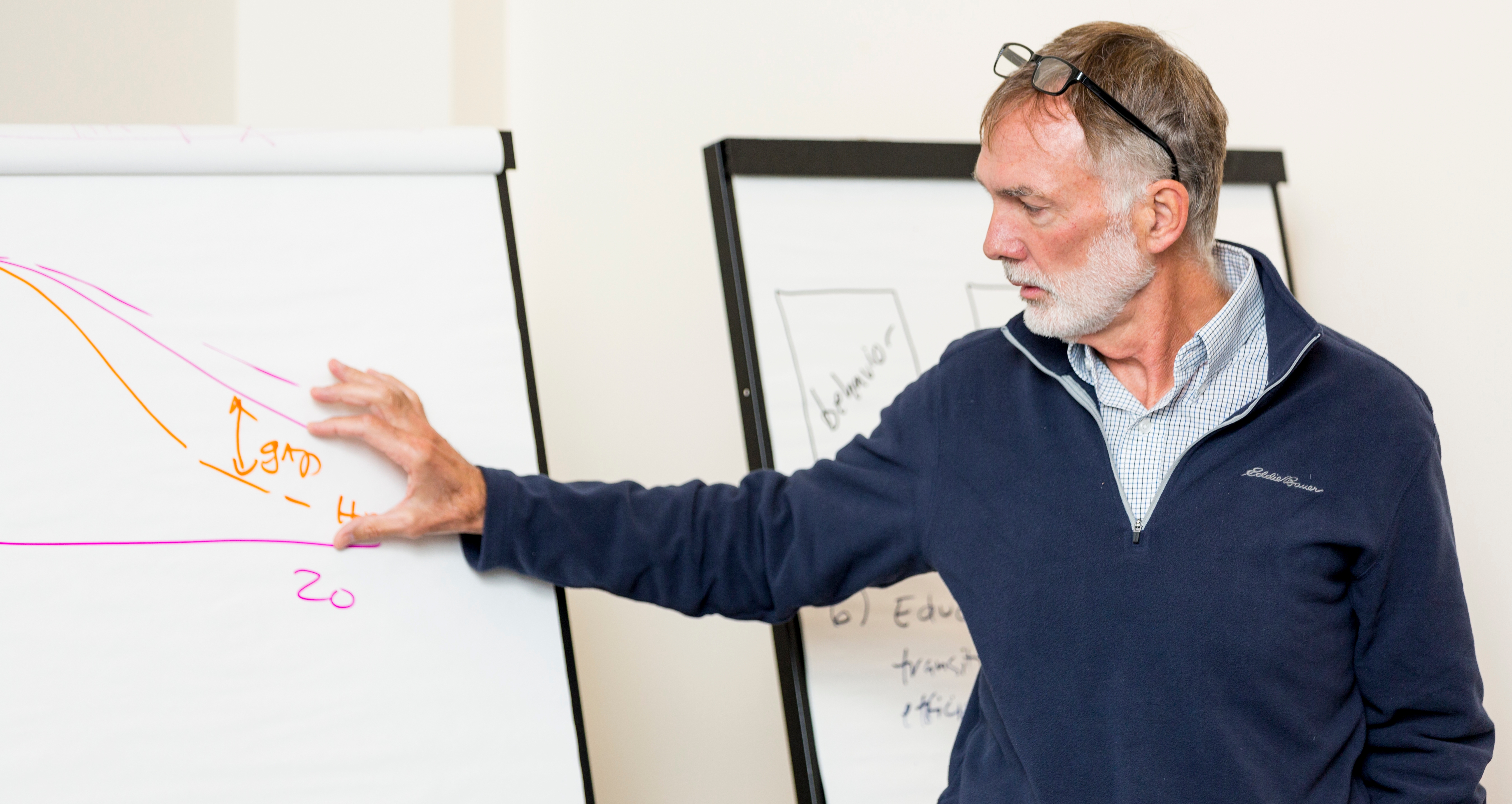
Thomas Clasen, professor of environmental health and Rose Salamone Gangarosa Chair of Sanitation and Safe Water, Rollins School of Public Health, Emory University
In early October, BCSSW, the Schiller Institute for Integrated Science and Society, and the National Institutes of Health convened system scientists and environmental health experts to use innovative approaches for improving environmental health interventions and their implementation.
Scientific research documenting the negative health effects of air and water pollution abound. Yet, why do many of the resulting evidence-based solutions fail to be accepted by communities or wane over time?
Motivated by the value of combining implementation and systems science methodologies to improve the adoption and sustained usage of environmental health interventions, a small group of environmental health and systems science experts came together for an interactive workshop organized by BCSSW Dean Gautam N. Yadama and Joshua P. Rosenthal, director of the National Institutes of Health (NIH) Implementation Science Network (ISN) at Fogarty International Center. The group shared challenges, best practices, and methodologies, and identified opportunities for collaboration, including plans to author a manuscript to stimulate further thinking and to introduce implementation and systems science approaches into environment health research.
“Implementation and systems science hold enormous potential for understanding and designing ways to sustain environmental health interventions to improve social and health outcomes in communities around the world,” explains Yadama. “The vast majority of environmental interventions are in very poor communities in developing countries. The social and health behaviors in such communities are complex and rooted in culture, prevailing livelihoods, household economics, and other contextual factors. Systems science provides approaches to model the non-linear feedback mechanisms between these factors while implementation science provides the framing to understand how environmental health interventions sustain in complex systems.” Rosenthal emphasizes additional benefits of the methodologies, stating, “Systems science helps us knock down the usual impediments to broad thinking, such as complexity, money, time, and multiple funders. It also engages community stakeholders to understand deep-rooted issues and co-create innovative solutions.”
The workshop brought together scientists from leading universities, including Washington University in St. Louis, Emory University, McGill University, the University of Michigan, and the University of Massachusetts, Amherst, as well as from leading non-profits, including the Global Alliance for Clean Cookstoves (GACC), a public-private initiative operating under the support of the United Nations, and the NIH Clean Cooking Implementation Science Network, a partnership among USAID, the Centers for Disease Control, the Environmental Protection Agency, and GACC.
Complex Systems Defined*
- They are made up of a large number of heterogeneous elements.
- These elements interact with each other.
- The interactions produce an emergent effect that is different from the effects of the individual elements.
- This effect persists over time and adapts to changing circumstances.
Presentations by Jill Baumgartner, associate professor at McGill, and by Thomas Clasen, endowed chair in sanitation and water at Emory University’s Rollins School of Public Health, on household air pollution (HAP) and water, sanitation, and hygiene (WASH) underscored the common socioeconomic, behavioral, and environmental barriers facing the HAP and WASH disciplines and the efficacy of knowledge sharing. The talks also stressed the complexity of challenges on the ground and the pressing need to design interventions that are shaped and embraced by the communities they serve, produce intended outcomes, and are technically and financially scalable.

Nadia N. Abuelezam, assistant professor at the Connell School of Nursing, talks with Douglas Luke, professor and director of the Center for Public Health Systems Science, Brown School at Washington University in St. Louis
Despite the fact that systems science methodology lends insights into dynamic systems made up of heterogeneous and interrelated components—the hallmarks of environmental health systems—it remains underutilized, as social scientists traditionally rely on linear analyses to intervene in complex social problems.
Two systems scientists from Washington University in St. Louis, Peter Hovmand, founding director of the Social System Design Lab at the Brown School at Washington University in St. Louis, and Douglas Luke, director of the Center for Public Health Systems Science at the university, followed the HAP and WASH presentations with their own highlighting the complementary nature of systems and implementation sciences. They reviewed three systems science approaches—system dynamics, network analysis, and agent-based modeling—and their value in understanding HAP and WASH interventions in communities around the world.
To illustrate the effectiveness of system approaches, Hovmand created a system dynamics model in conjunction with the participants in real-time to analyze the use of solid versus clean fuels for cooking in India. The model outlined multiple feedback loops illustrating the relationships among drivers such as family size, infrastructure, forest cover, costs of clean fuel options, and supply of liquid propane gas in clean cooking technology adoption. The group was impressed with the speed and immediacy of the model creation. Yadama commented that it was “team science” at its best: social and environmental scientists who contribute contextual insights collaborating with systems scientists who bring a feedback perspective to understanding dynamic environmental health problems.
Three Key Methods for Studying Complex Systems*
1. System dynamics: Uses informal and formal models with computer simulation to uncover and understand endogenous sources of complex system behavior.
2. Network analysis: The measurement and analysis of relationships and flows among actors, including people, organizations and other information processing entities.
3. Agent-based modeling: Uses computer simulations to examine how elements of a system (agents) behave as a function of their interactions with each other and their environment.
Before concluding the workshop, the scientists brainstormed an outline for a manuscript making the case for applying systems thinking to environmental health solutions. “Our goal in authoring this paper is to shift the field, to stimulate demand for the use of these tools in global health implementation science,” explains Rosenthal. The workshop made it clear, systems science offers environmental health researchers new tools to analyze old problems, generating fresh perspectives and transformative insights.
Photography by Caitlin Cunningham.
*“Systems science methods in public health: Dynamics, networks, and agents,” Douglas A. Luke and Katherine A. Stamatakis, Annual Review Public Health, 2012.

